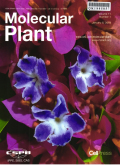- 钛学术文献服务平台 \
- 学术期刊 \
- 基础科学期刊 \
- 生物科学期刊 \
- 分子植物(英文版)期刊 \
Improving genomic tools for outcrossing crops
Improving genomic tools for outcrossing crops
基本信息来源于合作网站,原文需代理用户跳转至来源网站获取
摘要:
For decades, practical limitations and cost have created a bias in plant genetic studies toward species that tolerate self pollination.An important work by Chen et al.(2021) in this issue provides key tools to overcome this bias and paves the way toward more efficient genetics and breeding in outcrossing crops.
Plants that tolerate full or partial inbreeding can be maintained in perpetuity and increased infinitely.Conversely, outcrossing species that do not tolerate inbreeding can be difficult to study due to their genetic makeup.For instance, heterozygous individuals segregating in a population cannot be grown as replicated "genotypes," but instead must be grown and phenotyped as individual plants.Due to the heavy influence of macro-and microenvironmental factors on the performance of most plants, studies that use phenotypes from single individuals are rarely implemented except when absolutely necessary due to time or mating system (e.g., Müller et al., 2019), with a few notable exceptions in crops (e.g., Gyawali et al., 2019).In addition to challenges surrounding phenotyping, genotyping challenges must also be overcome when studying heterozygous populations of outcrossers.For instance, quantitative trait locus (QTL) mapping requires genomic segments within each individual in the mapping population to be assigned to a corresponding parent.In double haploid, recombinant-inbred, or F2 mapping populations, the mathematics behind assigning genotypes to "parent 1" or "parent 2" is trivial.But, when these parents are themselves segregating for various alleles across loci, the math becomes difficult or impossible, especially for the case of polyploids.

推荐文章
基于CPN Tools的抑制弧改进方法研究
Petri
有色Petri网工具
抑制弧
列表
令牌
基于Arc Hydro Tools对辽河流域的自动提取
DEM
河网提取
Arc Hydro Tools
Pro Tools光纤网络系统设计分析
光纤网络
Pro Tools
AVID unity
基于CPN TOOLS的网络协议建模与仿真技术研究
有色petri网
CPN Tools
建模与仿真
状态空间分析
内容分析
关键词云
关键词热度
相关文献总数
(/次)
(/年)
引文网络
引文网络
二级参考文献 (0)
共引文献 (0)
参考文献 (8)
节点文献
引证文献 (0)
同被引文献 (0)
二级引证文献 (0)
2007(1)
- 参考文献(1)
- 二级参考文献(0)
2012(1)
- 参考文献(1)
- 二级参考文献(0)
2015(2)
- 参考文献(2)
- 二级参考文献(0)
2019(4)
- 参考文献(4)
- 二级参考文献(0)
2021(0)
- 参考文献(0)
- 二级参考文献(0)
- 引证文献(0)
- 二级引证文献(0)
引文网络交叉学科
相关学者/机构
期刊影响力
分子植物(英文版)
主办单位:
中科院上海生命科学研究院植物生理生态所
中国植物生理学会
出版周期:
月刊
ISSN:
1674-2052
CN:
31-2013/Q
开本:
出版地:
上海市岳阳路319号31B楼
邮发代号:
创刊时间:
语种:
eng
出版文献量(篇)
1996
总下载数(次)
1
总被引数(次)
17663
期刊文献
相关文献
推荐文献
- 期刊分类
- 期刊(年)
- 期刊(期)
- 期刊推荐
力学
化学
地球物理学
地质学
基础科学综合
大学学报
天文学
天文学、地球科学
数学
气象学
海洋学
物理学
生物学
生物科学
自然地理学和测绘学
自然科学总论
自然科学理论与方法
资源科学
非线性科学与系统科学
分子植物(英文版)2022
分子植物(英文版)2021
分子植物(英文版)2020
分子植物(英文版)2019
分子植物(英文版)2018
分子植物(英文版)2017
分子植物(英文版)2016
分子植物(英文版)2015
分子植物(英文版)2014
分子植物(英文版)2013
分子植物(英文版)2012
分子植物(英文版)2011
分子植物(英文版)2010
分子植物(英文版)2009
分子植物(英文版)2008
分子植物(英文版)2021年第8期
分子植物(英文版)2021年第7期
分子植物(英文版)2021年第6期
分子植物(英文版)2021年第5期
分子植物(英文版)2021年第4期
分子植物(英文版)2021年第3期
分子植物(英文版)2021年第2期
分子植物(英文版)2021年第1期

 免费查重
免费查重










